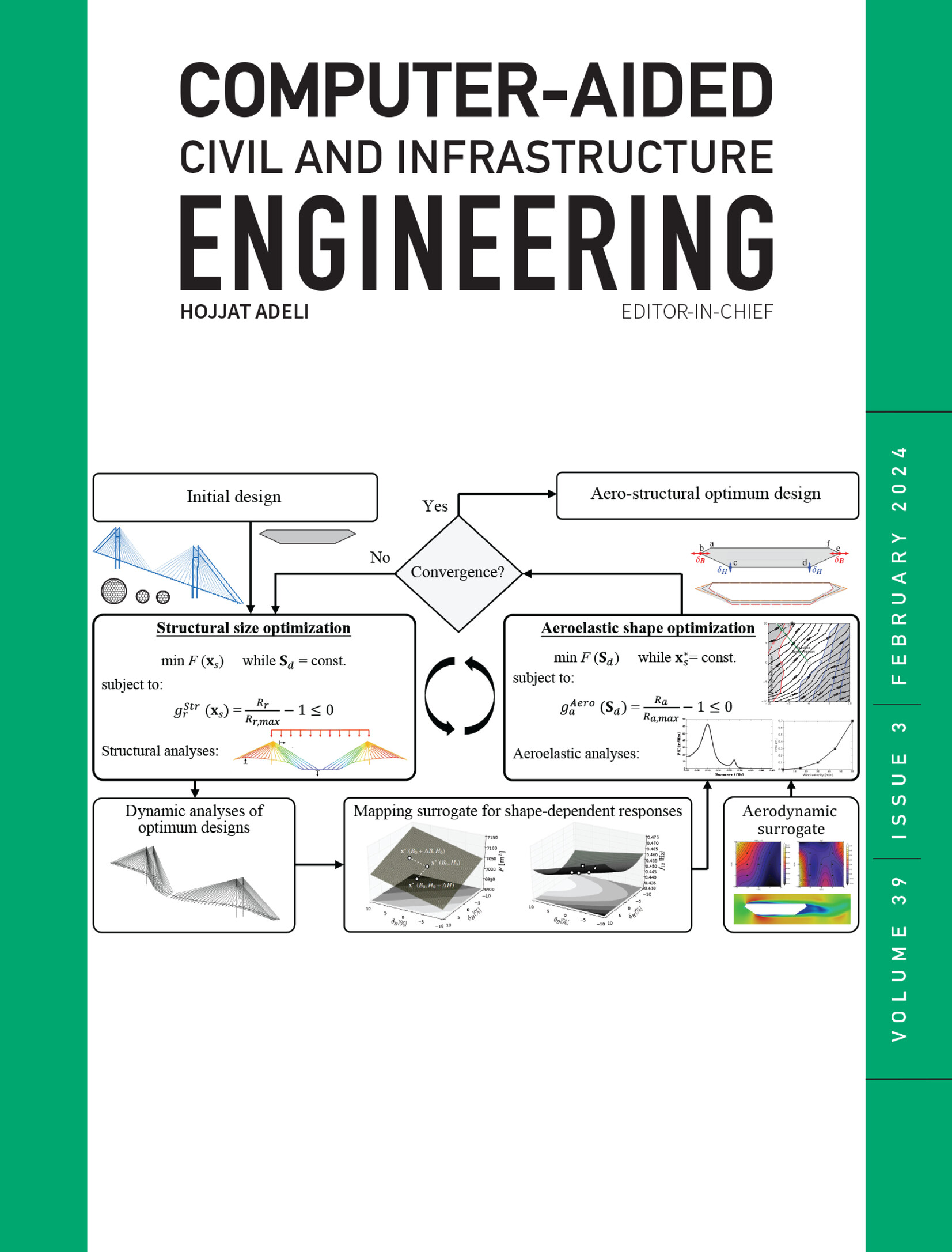沥青混合料细观力学剪切破坏行为的解堵塞转变研究
IF 9.1
1区 工程技术
Q1 COMPUTER SCIENCE, INTERDISCIPLINARY APPLICATIONS
引用次数: 0
摘要
沥青路面以其优越的舒适性、施工快捷、维修方便等优点被广泛应用于交通运输系统中,同时也面临着剪切破坏的问题。在此基础上,基于离散元法建立了沥青混合料虚拟双轴压缩试验的二维虚拟模型,以阐明其剪切破坏破坏机制。结果表明,剪胀引起的体应变增大标志着卸阻过渡的开始,而剪切破坏区和竖向裂缝的出现则反映了卸阻过渡在沥青混合料中的表现。围压对脱堵转变的发展有抑制作用,而温度对脱堵转变的发展有促进作用。非均质结构的出现和力链网络向无序和分支结构的演变是位移场和力链系统无干扰过渡的表现。该结果为预测和理解沥青混合料的剪切破坏行为提供了新的见解,为分析破坏演化及其影响因素建立了基本框架。本文章由计算机程序翻译,如有差异,请以英文原文为准。
Exploring the unjamming transition of meso‐mechanical shear failure behavior in asphalt mixture
Asphalt pavement is widely used in transportation systems due to its superior comfort, rapid construction, and convenient maintenance, while also being confronted with the problem of shear failure damage. Herein, two‐dimensional virtual models of asphalt mixture specimens are constructed based on the discrete element method for the virtual biaxial compression test to elucidate the underlying mechanisms behind shear failure damage. The results demonstrate that the increase in volumetric strain due to shear dilation signifies the onset of the unjamming transition, whereas the emergence of shear failure zones and vertical cracks reflects its manifestation in asphalt mixtures. Confining pressure has an inhibitory effect on the development of the unjamming transition, whereas temperature promotes its progression. The emergence of heterogeneous structures and the evolution of the force chain network into a disordered and branched structure are manifestations of the unjamming transition in the displacement field and force chain system. The outcome offers novel insights into the prediction and understanding of shear failure behavior in asphalt mixtures, establishing a fundamental framework for analyzing failure evolution and its influencing factors.
求助全文
通过发布文献求助,成功后即可免费获取论文全文。
去求助
来源期刊
CiteScore
17.60
自引率
19.80%
发文量
146
审稿时长
1 months
期刊介绍:
Computer-Aided Civil and Infrastructure Engineering stands as a scholarly, peer-reviewed archival journal, serving as a vital link between advancements in computer technology and civil and infrastructure engineering. The journal serves as a distinctive platform for the publication of original articles, spotlighting novel computational techniques and inventive applications of computers. Specifically, it concentrates on recent progress in computer and information technologies, fostering the development and application of emerging computing paradigms.
Encompassing a broad scope, the journal addresses bridge, construction, environmental, highway, geotechnical, structural, transportation, and water resources engineering. It extends its reach to the management of infrastructure systems, covering domains such as highways, bridges, pavements, airports, and utilities. The journal delves into areas like artificial intelligence, cognitive modeling, concurrent engineering, database management, distributed computing, evolutionary computing, fuzzy logic, genetic algorithms, geometric modeling, internet-based technologies, knowledge discovery and engineering, machine learning, mobile computing, multimedia technologies, networking, neural network computing, optimization and search, parallel processing, robotics, smart structures, software engineering, virtual reality, and visualization techniques.

 求助内容:
求助内容: 应助结果提醒方式:
应助结果提醒方式:


